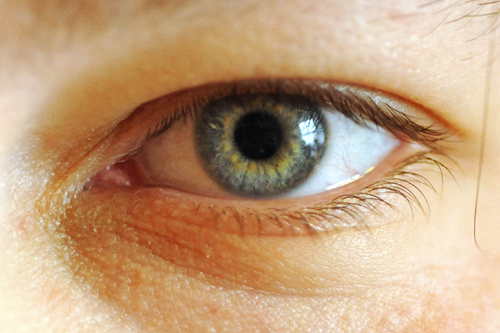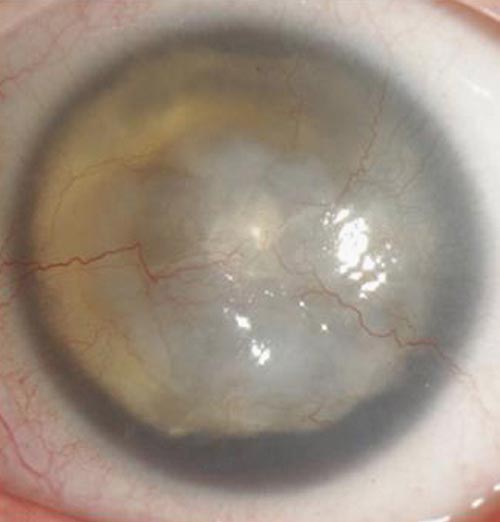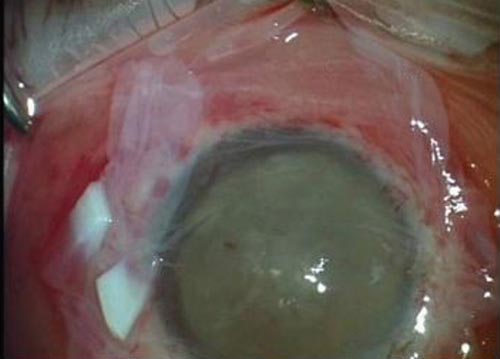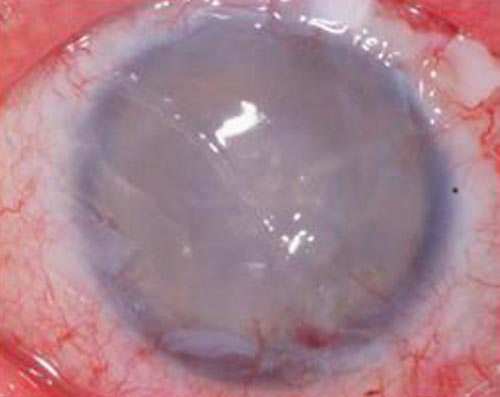DOCTORS in Scotland have performed revolutionary stem cell surgery which could help blind patients see for the first time.
The surgery is part of a study being run by doctors in Glasgow and Edinburgh to try and cure diseases of the cornea, the clear section of the eye which allows us to see.
Two patients out of a total of ten have already received the treatment, while another ten will form a control group and will receive other treatment.
Sylvia Paton has had poor vision since childhood due to an inherited condition Anirida, which means she has no iris and very little vision.
She was the first patient to undergo the procedure three months ago and today met with Health minister Nicola Sturgeon to discuss the progress.
Sylvia, 50, who works as a personal assistant with the Scottish Government, said: Before the procedure at best I estimate I had about 10% of the average sighted person’s vision, certainly no better than that. I’m very short sighted and my vision is very badly affected by environment, particularly daylight and darkness. Indoors is best for me and unnatural light is probably the most comfortable. Daylight has a lot of glare which leaves me very photophobic and I wear a tinted lens all the time outside, even on the dullest of days, to protect my eye.”
Sylvia, who walks with the aid of a white stick, said she had been challenged thoughout her life due to her condition.
“My lack of vision has sometimes made life difficult but you always find a way round,” she said. “I’m a very determined lady and I don’t let my vision hold me back – if I want to do something then I’ll usually always find a way to do it. It might be difficult, it might cost me a little bit more to do it and it might take me a little more time and a little bit more effort but I usually get there.”
WARNING: Graphic images below
Sylvia, who had to continually dab at her eye as it is currently slightly watery, added that the new treatment had further reaching possibilities than just allowing her to see.
“I’m really, really excited about this new treatment, not only for what I can achieve but also for other corneal disease effective conditions. It’s not only going to help people in this trial but if it’s successful and opened up and they learn so much from it could help millions of people around the world and that’s really important for me.
“The operation wasn’t painful but it was quite uncomfortable. I was asleep, thank goodness.
“I’m excited about the possibilities that can be gained from it [the procedure]. I was nervous the surgery, I was nervous about the possible outcomes and about it being sore and how I would cope with that.”
And Sylvia, whose 23-year-old son Michael suffers the same condition as her, has one simple wish.
She said: “I’ll never have normal vision but if it’s better I think I would like to see my grandson.”
Sylvia’s left eye before surgery
Sylvia’s eye with the stem cell membrane attached
Sylvia’s eye three months after surgery
During the complex procedure doctors take stem cells from the border between the cornea and the white of the eye.
They then place it on a piece of a donated amniotic sac and grow the cells in a laboratory while continually checking that the cells are sterile and free from infection.
Dead tissue on a patent’s eye is removed before the new tissue graft is put in place. The new cells will then continue to regenerate, hopefully improving the patient’s sight.
Dr Ashish Agrawal, who carried out the procedure in a three hour operation, said: “The main thing is that the blood vessels and the scarring do not grow back and that’s the proof that the stem cells are actually working.
“Two things that we are looking for is that first of all it is safe and the second thing is that it works. And if it does that then we will be thinking more in terms of offering it to a wider community.
Groundbreaking
“A big part of the process is not just the surgery; a big part of the process is growing the cells and developing the technique and the expertise. Now we know we can grow the cells, we know we can transplant them, they are working as of now and we know that as of now they are safe. We hope that all these things will continue to be like this in the next nine months.
“How much she sees at the end of it depends on how good the back of her eye is.
“I’m excited to be part of this because I think the benefit to the patents is going to be immense if it works but more importantly I have learned so much from just doing two patients.”
Nicola Sturgeon said: “This is hugely important and it’s potentially groundbreaking and really exciting. This procedure, if successful, could give sight back to patients with corneal blindness and that is something you can’t put a price on. but it’s also really important that this is happening in Scotland, the first patient in the UK to be part of this trial so not just is it that case that it has huge benefits for patients but it’s also real testament to the innovation of Scottish clinicians, so all in all I think this is something to be really, really excited about.”




